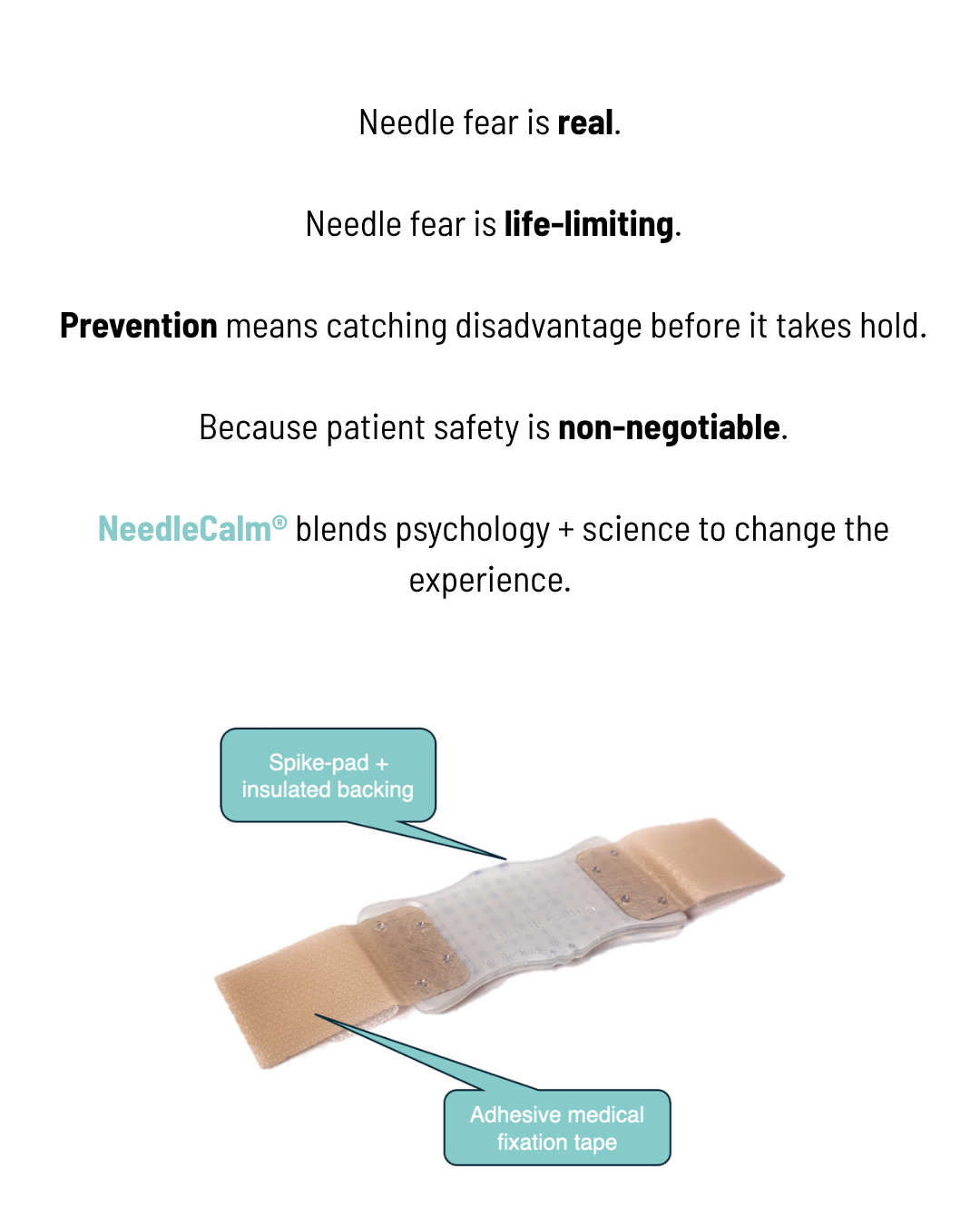How negative experiences can lead to lifelong fear — and how compassionate, trauma-informed care can help people rebuild trust in healthcare.
Introduction
For many people, medical care is meant to heal — but for some, even the smallest procedure can trigger deep fear. A rushed injection, a painful blood draw, or being dismissed when expressing anxiety can leave lasting psychological marks.
Over time, these experiences can develop into needle-related trauma or even medical PTSD — where the thought, sight, or anticipation of a procedure causes panic, avoidance, or intense distress.
At NeedleCalm®, we believe that no one should have to choose between their health and their sense of safety.
Why Needle Trauma Matters
People living with chronic illness, disability, or anxiety often undergo frequent medical procedures. When those encounters are painful, rushed, or invalidating, they can compound into ongoing fear and avoidance.
This isn’t just discomfort — it’s a barrier to care. Some patients skip blood tests, vaccinations, or essential treatments because of the overwhelming stress associated with needles.
When fear stops people from accessing care, it becomes a health equity issue.
What Needle Trauma Can Look Like
Needle-related trauma manifests differently for everyone. Common responses include:
- Panic attacks or fainting before or during procedures
- Avoiding tests, vaccines, or treatments — even when necessary
- Flashbacks to painful or frightening experiences
- Hypervigilance or sleeplessness leading up to appointments
- Feelings of powerlessness, shame, or being dismissed when seeking help
These are not overreactions — they are valid trauma responses to previous harm.
How the System Contributes
Unfortunately, the healthcare system often unintentionally reinforces this fear. Some common factors include:
- A lack of time, empathy, or trauma-informed practice in care
- Being told to “just relax” rather than being supported
- Repeated painful or failed needle attempts
- Dismissal of fear as “childish” or “irrational”
- Sensory overload in medical environments — bright lights, smells, sounds, and unfamiliar equipment
When fear and pain are ignored, it teaches patients that their distress doesn’t matter — and that lesson can last a lifetime.
Paths Toward Healing
Healing from needle trauma requires both individual and systemic change. Small, intentional steps can make a profound difference:
- Acknowledge that fear and avoidance are valid responses to past harm
- Prepare for procedures using grounding techniques — slow breathing, soothing music, or comfort items
- Bring support — a trusted friend, family member, or advocate can help you feel safer
- Ask for choice — request time, explanations, and consent before each step
- Use supportive tools such as the NeedleCalm® device, which provides a calming sensory distraction to help reduce pain and anxiety during injections or blood draws
How NeedleCalm® Helps
NeedleCalm® was developed to make needle procedures safer, calmer, and more humane.
By engaging the body’s natural pain-gating response, it reduces both physical discomfort and emotional distress — helping people re-enter healthcare spaces with more confidence.
For some, NeedleCalm® isn’t just a comfort aid. It’s the first step in rebuilding trust in medical care, and a reminder that safety and compassion are not optional — they’re essential.
Closing Thoughts
Fear of needles is not weakness — it’s often the echo of a negative medical experience that was never acknowledged or repaired.
With empathy, trauma-informed practice, and practical tools like NeedleCalm®, we can begin changing that experience for good.
Because every person deserves care that heals — not harms.

